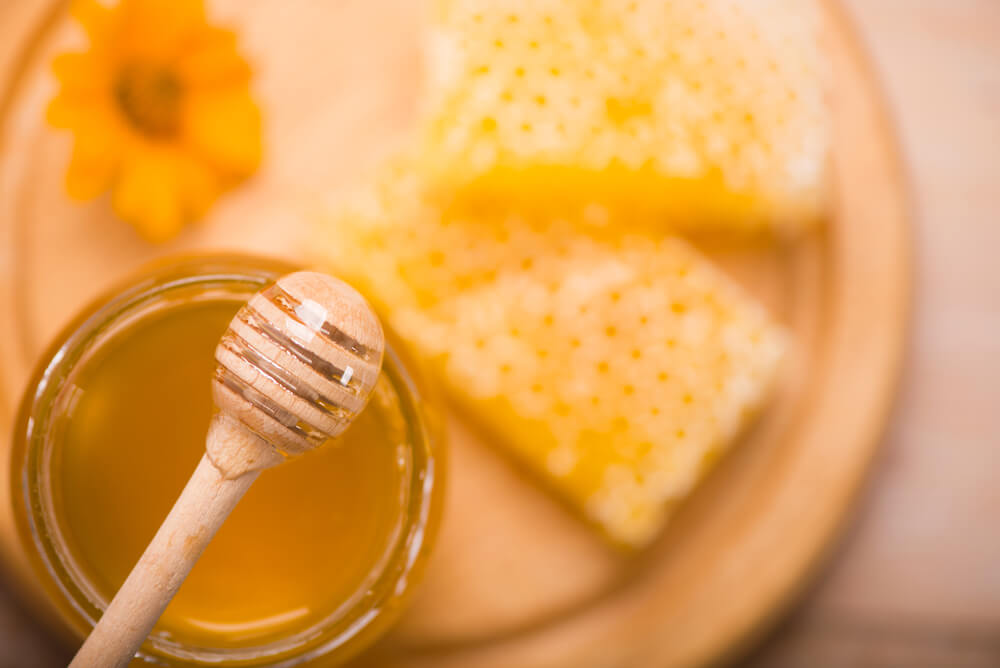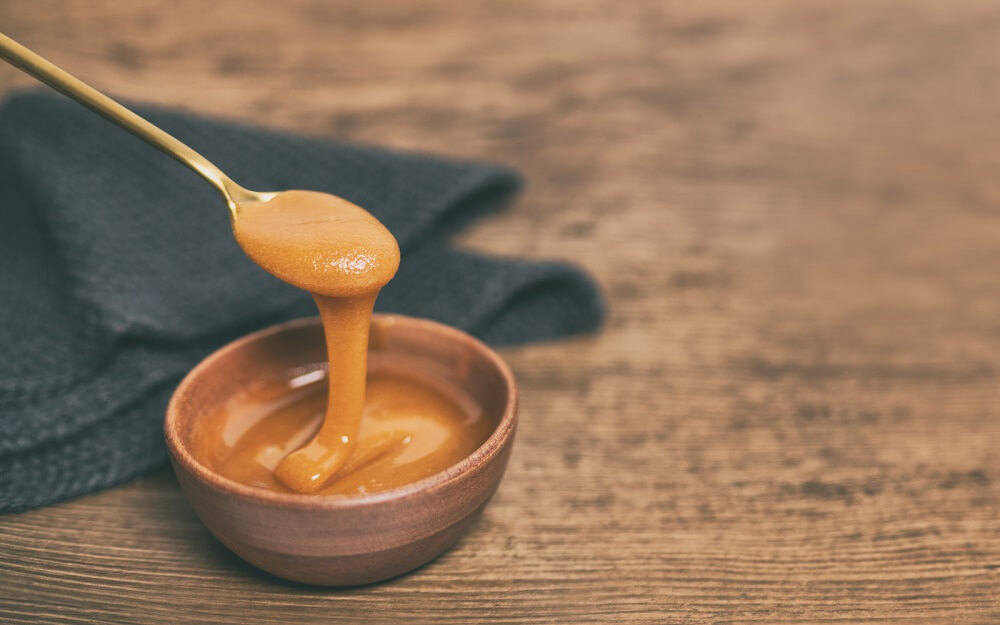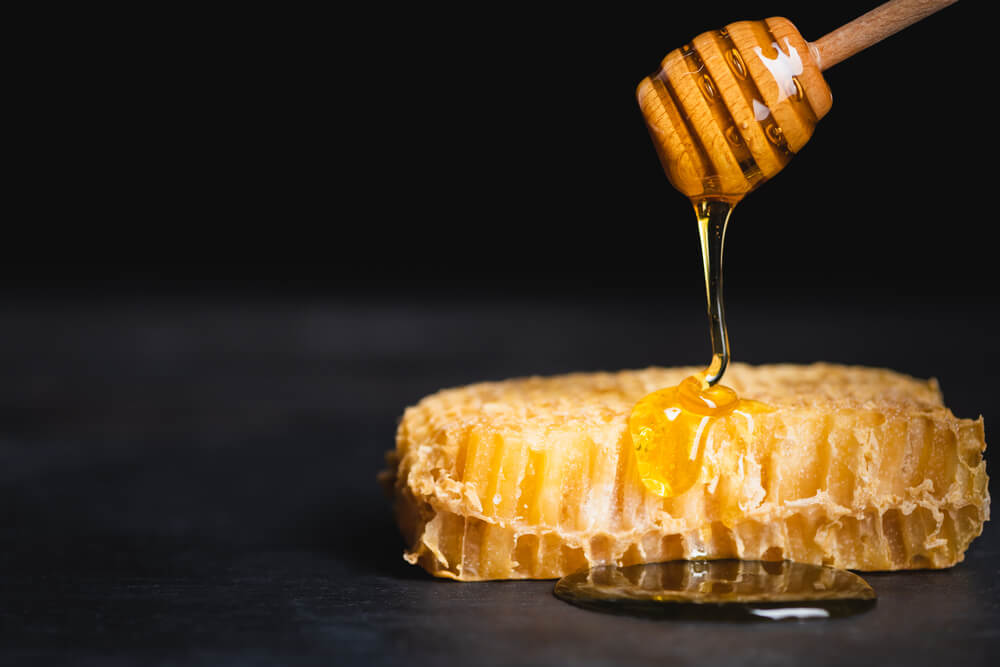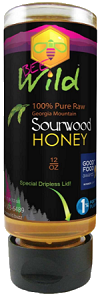Table of Contents:
What is Sourwood Honey?

Sourwood honey comes from bees who pollinate sourwood trees. This type of honey is native to the United States. It primarily comes from the mountain regions of North Carolina, Tennessee, and Georgia.(1, 2)
Sourwood honey is typically a light amber color. That said, it can be a tad darker depending on where the honey bees sourced the nectar from.
So now for the million-dollar question:
Does sourwood honey taste sour?
The answer might surprise you.
Raw sourwood honey isn’t sour. Instead, it has a silky and sweet flavor with a hint of caramel. The aftertaste is pleasant with a slight gingerbread flavor. Sourwood honey pairs well with many types of foods. It can be drizzled on yogurt, granola, and ice cream for an extra bit of sweetness.
It also works well for a sweet and savory combination. Some honey lovers also make their own honey barbeque sauce using sourwood honey.
The good news is that raw honey has anti-inflammatory, antifungal, and antiviral benefits. As a result, raw and unfiltered honey has been used as a skin treatment in clinical settings for eczema, psoriasis, and herpes lesions.(3, 4)
But keep in mind:
Only raw honey provides these health benefits.
Raw sourwood honey is unpasteurized and unprocessed. It’s been preserved in its natural state, just as the honey bees produced it inside the hive. This matters because pasteurized honey gets stripped of its anti-inflammatory, antibacterial, and antiviral properties. Additionally, some manufacturers add artificial sweeteners to their honey.(5, 6)
As such, the FDA has issued a warning stating overly processed honey is not considered real honey.(7)
With that in mind, choose raw sourwood honey over processed honey. You can do so by looking for honey jars that say “raw” on the label.
What Are the Benefits of Sourwood Honey?
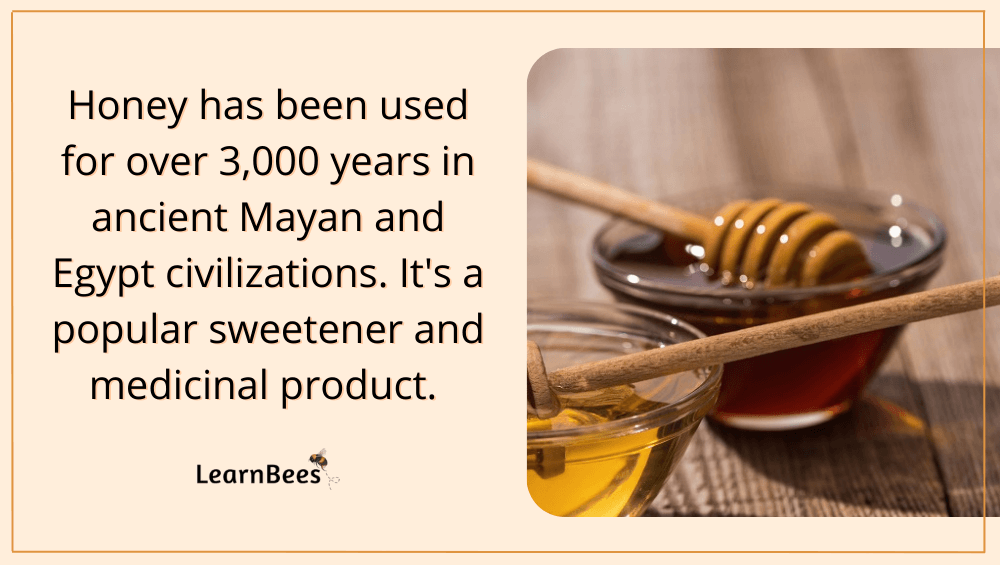
Sourwood Honey Nutrition
One tablespoon of sourwood honey contains:
- Calories: 60 calories
- Protein: 0 grams
- Fat: 0 grams
- Carbs: 17 grams
- Sugars: 16 grams
Benefit 1: Raw Honey is Rich in Antioxidants
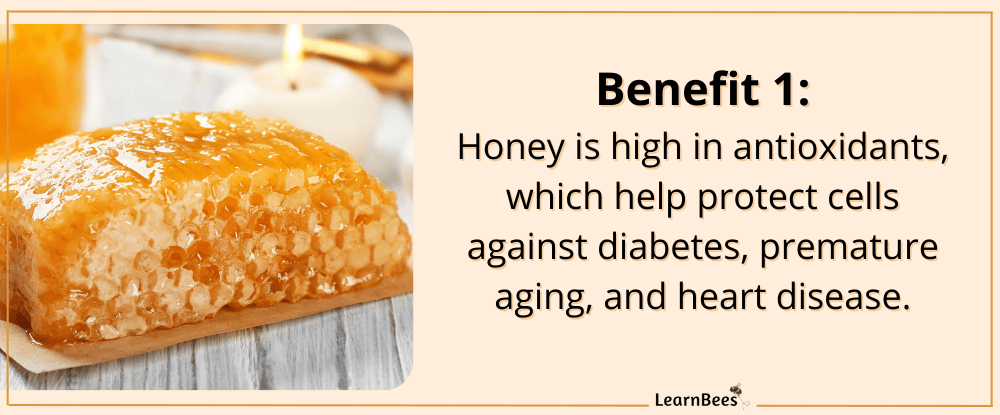
Raw honey contains antioxidants like flavonoids and phenolic acids, which have data showing they can protect against cell damage. Cell damage can result in conditions like heart disease, type 2 diabetes, and premature aging.(8)
Honey’s antioxidants also have anti-inflammatory effects. Therefore, raw honey is believed to be beneficial in preventing diseases associated with oxidative stress.(9)
Raw honey contains small traces of bee propolis and pollen, which provides additional health benefits. What’s more, according to studies, raw honey can have a beneficial impact on the cardiovascular, respiratory, digestive, and nervous systems.(10)
Benefit 2: Raw Honey Can Help Treat Skin Wounds and Conditions

In a clinical setting, raw honey has been a successful treatment option for skin wounds because of its antibacterial, antifungal, and anti-inflammatory properties.(11, 12)
Raw honey also has antimicrobial qualities, which can help stop bacteria from spreading. As such, honey can help wounds heal faster.(13, 14)
Additionally, research has found that honey can aid in the recovery of infections that appear following surgery.(15)
Raw honey has also been used as a treatment option for diabetes-related foot ulcers. Foot ulcers are painful sores that form at the base of the foot and can be quite serious. In some cases, foot ulcers can lead to amputation.
According to one research, raw honey had a 43.3% success rate of treating diabetes-related foot ulcers. Honey was also found in separate research to cure an astonishing 97% of patients’ diabetes-related ulcers.(16)
Honey has also been used as a treatment option for other skin concerns, such as herpes lesions and psoriasis.(17)
Benefit 3: Honey May Be Good for Your Heart

Raw honey has been shown in some studies to aid in decreasing the risk of heart disease.
According to one trial of over 4,500 participants, consuming raw honey might aid in lowering the risk of high blood pressure.(18)
In another study, honey helped reduce blood pressure, regulate the heart, and increase blood fat levels. As such, honey might aid in overall heart health.(19)
According to researchers, honey was found in a rat experiment to help prevent oxidative stress in the heart.(20)
Propolis is also found in raw honey. Propolis is a substance made by honey bees from sap-producing trees. This substance has been found to have cholesterol-lowering and triglyceride-lowering benefits.(21)
Benefit 4: Raw Honey Can Aid in Treating Upper Respiratory Infections

Upper respiratory infections come with various symptoms, including sore throats and prolonged coughing. People who have upper respiratory illnesses may experience disrupted sleep.
Reports suggest that raw honey may be a good substitute for cough medications in treating sore throats and coughs.(22)
Honey has been found to be more effective than diphenhydramine (a cough medicine ingredient) in reducing coughing symptoms.(23)
Honey can help soothe sore throats and reduce coughing durations. As such, several studies have shown that raw honey can help with upper respiratory infections.(24)
What’s more, raw honey has been shown to improve the quality of children’s and parents’ sleep suffering from upper respiratory infections by reducing coughs, according to another study.(25)
Honey, unlike over-the-counter cough medicines, has little to no negative side effects.
What Are the Risks of Sourwood Honey?
Both honey and honeycomb are considered low-risk foods that most people can consume safely.
However, there are two things to remember before buying honey:
Risk 1: Honey Can Harm Babies Under 12 Months

Honey shouldn’t be given children under one year of age since it can cause infant botulism. Infant botulism is a type of foodborne illness created by Clostridium botulinum bacteria. It can hurt the nervous system and lead to paralysis and respiratory failure.
Due to their underdeveloped immune systems, babies are extra vulnerable to botulism from foods.
That said, honey is considered safe for most children once they’re older than 12 months.
Risk 2: Blood Sugar Levels Can Be Spiked From Eating Honey

“Is honey a healthier alternative to sugar?” is a question many people want to know.
You’ve probably been told that honey is a superior sweetener to table sugar. While honey does have health benefits, it should be consumed in small or regulated amounts by people with diabetes.
Honey, like other sugars, can spike blood sugar levels. It also contains carbohydrates which people using insulin need to keep in mind.
FAQs About Sourwood Honey
- How do you get sourwood honey?
- How much does sourwood honey cost?
- What’s the difference between sourwood honey and regular honey?
- What plant does sourwood honey come from?
- Is sourwood honey light or dark?
- What’s the sourwood honey season?
- Is sourwood honey good for you?
How do you get sourwood honey?
If you’re wondering where to buy sourwood honey, we’ve got options.
If you live in the mountain areas of Georgia, Tennessee, and North Carolina, you’ll likely find it at your local farmer’s market. That’s because sourwood honey is primarily produced in those regions.(26, 27)
If you don’t live in those areas, don’t worry. You can buy sourwood honey online.
The best sourwood honey brand I’ve found is Bee Wild. Their sourwood honey is raw and the taste is amazing.
—> Go back to the FAQs on sourwood honey
How much does sourwood honey cost?
The cost of sourwood honey is reasonable. It’ll typically be between $15 – $30 for a large bottle.
We recommend Bee Wild’s sourwood honey for an affordable option.
—> Go back to the FAQs on sourwood honey
More to Explore:
What’s the difference between sourwood honey and regular honey?
This is a good question.
But here’s the thing:
There are more than 300 unique types of honey.(28)
The color can range from dark honey to light honey, with hundreds of different flavors.
Examples include:
So the term “regular” honey is a broad one that doesn’t really mean anything.
Sourwood honey is different than other types of honey in that it has a sweet, caramel-like flavor. It’s also a type of honey that’s native to the United States.
When buying sourwood tree honey, make sure you pick a bottle that says “raw and unfiltered.” Raw and unfiltered honey tastes better than processed honey. It also comes with nutritional benefits like enzymes, minerals, and antioxidants.(29, 30, 31)
—> Go back to the FAQs on sourwood honey
More to Explore:
What plant does sourwood honey come from?
If you’re like most people, you’ve probably asked yourself:
Where does sourwood honey come from?
And why is it called sourwood honey, anyway?
Great questions.
Sourwood honey comes from bees who pollinate sourwood trees. These trees are native to the United States and are most commonly found in the mountain areas of Georgia, Tennessee, and North Carolina.(32, 33)
So now the question becomes:
Is sourwood honey sour?
Actually, no. Sourwood honey is strictly named for the sourwood tree that it comes from.
The honey is sweet and silky. The flavor has a hint of caramel with a gingerbread aftertaste. If you’ve never tried it, you need to at least once.
—> Go back to the FAQs on sourwood honey
More to Explore:
Is sourwood honey light or dark?
Sourwood honey has a beautiful light amber color in most cases. The exception is if sumac or poplar nectar is added in, which can make some sourwood honey a bit darker.
—> Go back to the FAQs on sourwood honey
More to Explore:
- Acacia Honey: The Taste, Health Benefits, & Risks
- Does Honey Go Bad or Expire?
- Alfalfa Honey: The Taste, Health Benefits, & Risks
What’s the sourwood honey season?
The sourwood honey season spans from mid-June to late July, when the sourwood trees are blooming.
But here’s an interesting tidbit:
Sourwood trees do grow and bloom outside of Georgia, Tennessee, and North Carolina. But, the trees outside of those areas don’t produce enough nectar for the bees to make honey.
More importantly, sourwood trees produce nectar in mountain regions due to the increase in elevation. Sourwood trees produce the most nectar at an altitude of 1,000 feet above sea level.
So for example, you may find sourwood trees in Kentucky. But, the elevation won’t be high enough to produce sourwood honey in that area.
—> Go back to the FAQs on sourwood honey
More to Explore:
Is sourwood honey good for you?
Yes, sourwood honey comes with its fair share of health benefits. With that said, you want to make sure your sourwood honey is labeled “raw and unfiltered.”
Let me be clear.
You don’t want processed or filtered honey.
Why?
Because processed honey loses its nutritional benefits during the heating and pasteurization process.(34, 35, 36)
Once the honey has been ultra-filtered, it’s no longer considered real honey according to the FDA.(37)

